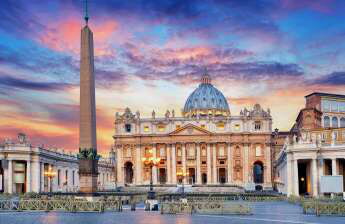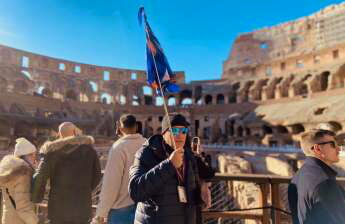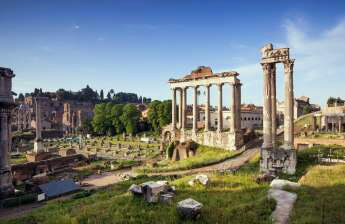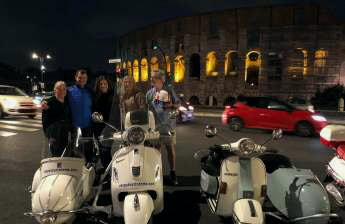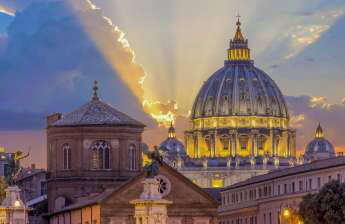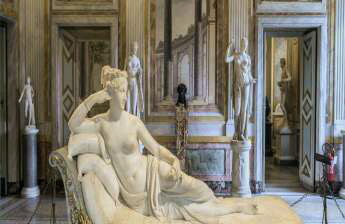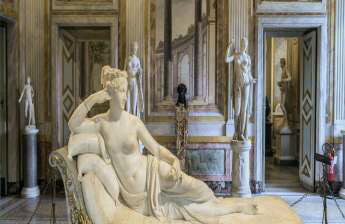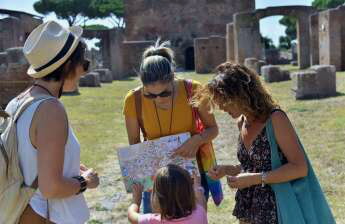The Roman Forum (forum romanum) - now a UNESCO World Heritage Site - was a hub of political, business and religious life in ancient Rome. A jumble of marble fragments, triumphal arches, temple ruins and sundry other ancient architectural elements, it's still an exciting place to visit.
This is especially true if you have time to take a walk along the main road that runs through it, Via Sacra. This was a thoroughfare that connected the major sites in the Forum from the Capitoline Hill. It's a great way to get an idea of what it would have looked like in its prime.
The Arch of Titus
The Arch of Titus is a large and impressive 1st-century arch located on the Via Sacra. It commemorates the triumphal procession of the Romans’ victory over the Jews in 71 AD.
This imposing structure is the first thing you’ll see when you enter Rome from the south. It’s a triple-gated arch that was designed by Emperor Domitian to honor his elder brother Titus.
One of the reliefs on the sides of the arch shows Titus driving a four-horse chariot in triumph over the Jews. The other panel depicts Roman soldiers carrying treasures and spoils from Jerusalem during the triumphal parade.
The Temple of Venus
In 121 AD Emperor Hadrian began construction on this huge temple, on the site of the vestibule that housed Nero’s colossal bronze statue. He inaugurated it in 135 AD and completed the building by his successor Antoninus Pius.
Dedicated to Venus Felix and Roma Aeterna, it was the largest of all the temples built in Ancient Rome. It was a double temple, with back-to-back halls where each goddess was worshipped.
The temple was designed by Hadrian, who had succeeded his predecessor Trajan through a secret conspiracy. Hadrian was a "great" emperor who was passionately interested in art and architecture.
The Via Sacra
The Via Sacra, or Sacred Way, is the main street of the Forum. This path was the heart of ancient Rome-a place where everything came together from religious festivals to triumphal marches and daily throngs of people coming together to chat, throw dice, engage in business or secure justice.
The road was built in the fifth century B.C. It was later paved, and was lined with colonnades.
It connected the fortress of the Capitol with the sacellum (funeral chapel) of Strenia. It was a major road in regal and republican times, and was also a residential quarter for the richest citizens of Rome.
The road was also the site of many deeds and misdeeds, solemn religious festivals, and magnificent triumphal marches. The road is still used today and has a storied history.
The Basilica of Maxentius
The Basilica of Maxentius is a stunning architectural masterpiece. Commissioned by the emperor Maxentius and completed by his successor Constantine, it is one of the most well-known sites in Rome.
The basilica was a large public building that was used for a variety of purposes, such as court rooms, audience halls, and religious ceremonies. It was also a place for business transactions.
The building was built in 308 AD and was a major construction project that took a few years to complete. When it was finished, it was one of the largest buildings in ancient Rome. It was a great example of Roman architecture and it helped to inspire many later architects.
The Mamertine Prison
The Mamertine Prison (Carcere Mamertino) is one of the most atmospheric parts of the Roman Forum. You'll feel as though you're stepping back in time when you descend into the dark, dank cells where Rome's enemies were held.
Originally, the lower level was known as Tullianum and was used for detention and execution. It was a gloomy place to spend time and was in use for at least the 7th century BC.
In later years, it was a shrine for the cult-like worship of St. Peter and a church got built above it in the 16th century. Legend has it that the apostles Peter and Paul were imprisoned in this dungeon before being executed.
